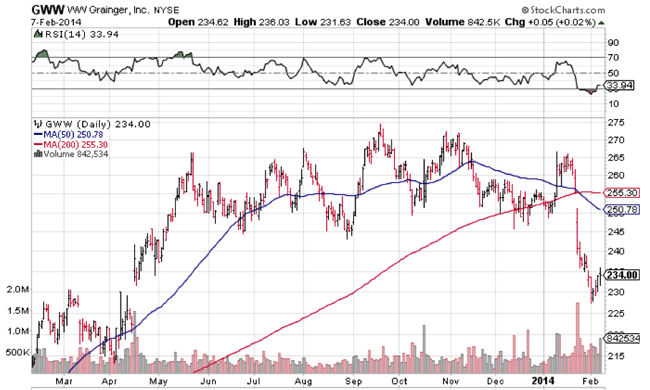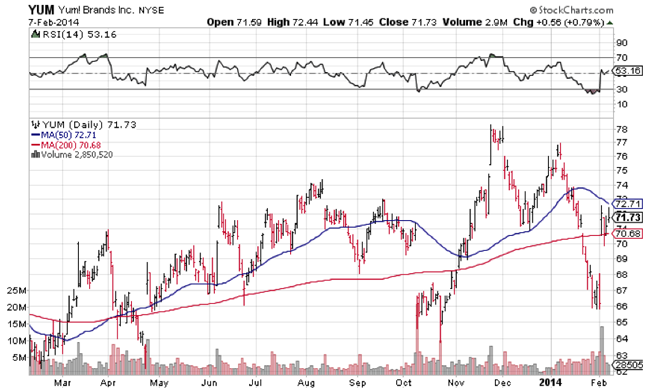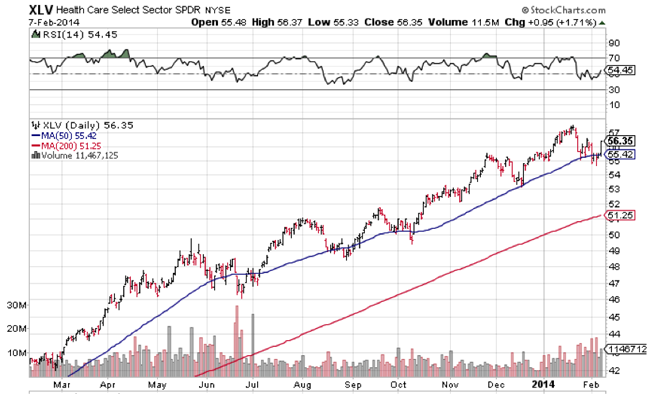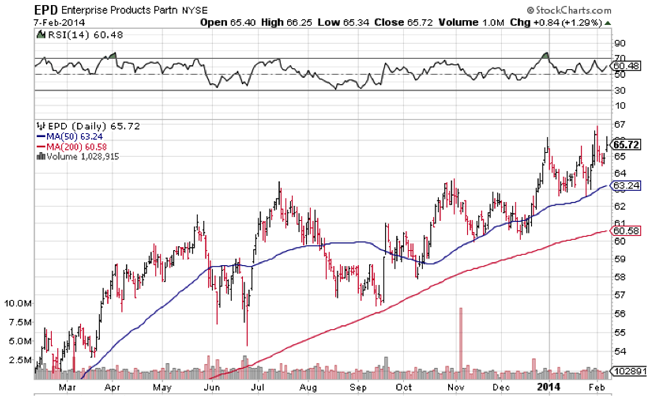As we approach the half-way point for the current quarter (was New Year’s Day that long ago?), I wanted to briefly summarize financial market news and our response thereto. Hope was surging along with the market as the books were closed on 2013. As indicated at our client Holiday Luncheon in December and in private conversations with some clients, value investors such as me have been uncomfortable with the dramatic lift off in share prices that manifested itself so widely during the last three months of 2013. In recent weeks, the advance was halted and a mild correction seems to have begun. A battle between optimists and pessimists is in progress – a battle that I suspect will be won by the bulls.
The Fixed Income Story
Only a year ago, investors were throwing money at bonds and bond mutual funds in a desperate attempt to improve their yields and income. Disintermediation from banks and credit unions resulted in large inflows to popular bond mutual funds such as PIMCO Total Return fund. Then, Fed Chairman Bernanke let the world know that extraordinary money creation was unlikely to go on forever. This was, to many bond investors, equivalent to crying “Fire” in a crowded theater. In a matter of days, bonds were dumped and interest rates rose over 30%. The rest of 2013 was filled with bond Bears citing the end of a secular bull market for bonds: it was inevitable, they explained, that with economic recovery gaining momentum, interest rates would head higher and that ownership of long-dated debt instruments carried the risk of locking in lousy interest rates. The problem with this argument is that it has been wheeled out repeatedly since 2009, when the Great Recession put in a bottom. I have proudly refused to dump our high yielding, high quality bonds and preferreds for the past four years, although we did begin our own form of “tapering” by generally not replacing maturing bonds in client portfolios when they matured, since interest rates on replacement candidates had plummeted. However, the dramatic reaction in May and June 2013 to Mr. Bernanke’s warning with wholesale outflows from bond mutual funds, caused me to actively reduce bond mutual fund positions with the result that most client portfolio allocations to fixed income instruments fell from about 40% to around 25%. While stocks have been in turmoil in recent sessions, it is a reversal for interest rates that is surprising. Yields on the 10 year Treasury bond have dropped from 3% down to 2.65%, although still up from last year’s low in the 1.7% area. This seems to portend that an economic slowdown may be anticipated. It may also confirm the belief of some that Janet Yellen is more of an inflationist than was Ben Bernanke, and that Quantitative Easing (aka: ”QEI” or “QE II“ or “QE III”) may continue for longer and at a hotter pace than previously. It may also be the result of Asian money warming once again to the stability of the US dollar – there was a near meltdown for a large Chinese income fund just last week, apparently averted by swift government intervention. However, investors are likely to receive back less than their original investment, unhappy news for income oriented investors who may find renewed comfort in owning US T-bonds.
Equities – a bit of a Puzzle
While the stock market correction, so far, is well within the normal range of minor adjustments, certain cyclical stocks have been sounding a warning. A stock widely held by clients, W.W.Granger, hardware store to professionals, took a nauseating tumble. I was concerned when the stock, despite decent growth in earnings, failed to participate in the Fall Rally. In late January, shares began to crater.

We closed out the position, puzzled, but in most cases with a profit. A couple of years ago, “GWW” had been our second choice for a cyclical investment, after competitor Fastenal (FAST) “got away” in the early days of economic recovery. But Fastenal’s stock too, has been equivocating. Are these the canary in the coal mine for an economic slowdown? It seems possible, given recent reports that auto sales are slowing from last year’s torrid levels. Still, consumer confidence is good and it appears people are investing in home improvement as residential values stabilize and in many places rise. However, a look at shares of Lowes and Home Depot which have given back some recent gains seems to confirm that cyclical stocks are warning of an economic slowdown later this year. Stocks usually anticipate economic activity about five to six months in advance. If this rule holds true then these construction oriented companies are signaling a Summer Slowdown. If this is in the offing, what would be the cause?
I’ve yet to hear an economist provide a coherent explanation for current market turmoil. This leads me to wonder if disruptions in spending patterns are arising due to the implementation of the Affordable Care Act (aka “Obamacare”). As households experience sticker shock in the form of significantly higher insurance premiums, this “tax” may serve as a damper on personal spending and consumption. Perhaps this is a stretch, but unhappiness with ACA, so closely identified with Democrats, may well lead to significant losses for that party in the autumn elections. Captains of Industry may be delaying capital spending while awaiting a more business friendly environment in Washington, one that includes new incentives for investment in plant and equipment. Such fiscal (as opposed to monetary) incentives could only emerge from a Republican controlled Congress. I’ve no evidence to back up these musings, but 40 years in the markets entitles me to hypothesize.
As mentioned, W.W. Grainger was sold in January. This week we liquidated positions in YUM! Brands. (They like to put an exclamation point in their official name.) Just last November, we re-established positions in YUM, the fast food company. We’d successfully invested in Yum between 2010 and late 2012. Then a concerted scare campaign began in government controlled Chinese media against the company. Claims were made that chicken for their KFC (Kentucky Fried Chicken) franchise was from impure sources. I suspected that this was an extortion effort by certain Chinese interests. I was no longer comfortable exposing clients’ money to a company that depended so heavily on its Chinese KFC franchise for growth. As the story died down and it appeared arrangements had been made to derail the anti-KFC-campaign, and as YUM’s share price rose above its 200 day moving average, a bullish sign, I was drawn back into this stock. Unfortunately, this was a premature decision.

The share price began sagging almost immediately and continued right through this week, based on the re-emergence of fears about China. I had thought and hoped the “bad chicken” issue had been resolved, however a new outbreak of Avian Flu in China caused me to worry that we might see a repeat of 2012’s Chinese orchestrated boycott that took Yum’s share price down by some 35%. I decided to not wait for the 4th quarter earnings report, and sold on Tuesday February 4. When the report came out Wednesday, despite showing weaker earnings, the stock jumped, apparently because the consensus had expected worse. So, right now, I have egg on my face, seemingly having zigged when I should have zagged. Still, Yum shares remain well below our November entry point, and the extreme volatility for this share makes it unlikely I’ll give this stock a third taste test for some time.
Looking elsewhere in client portfolios, we have had some weakness in two large energy holdings, ExxonMobil and Kinder Morgan, but resiliency in health care oriented funds

and Enterprise Product Partners:

Be assured I keep an eye on all your holdings. Please recall that we own businesses that I believe to have superior characteristics that justify long term positioning. Even the best businesses periodically experience price weakness due to factors that may be more related to fickle investor sentiment than to any fundamental flaw in the company. At this moment, I believe you can be confident in your investments for the remainder of 2014.
Gary Miller
February 7, 2014
